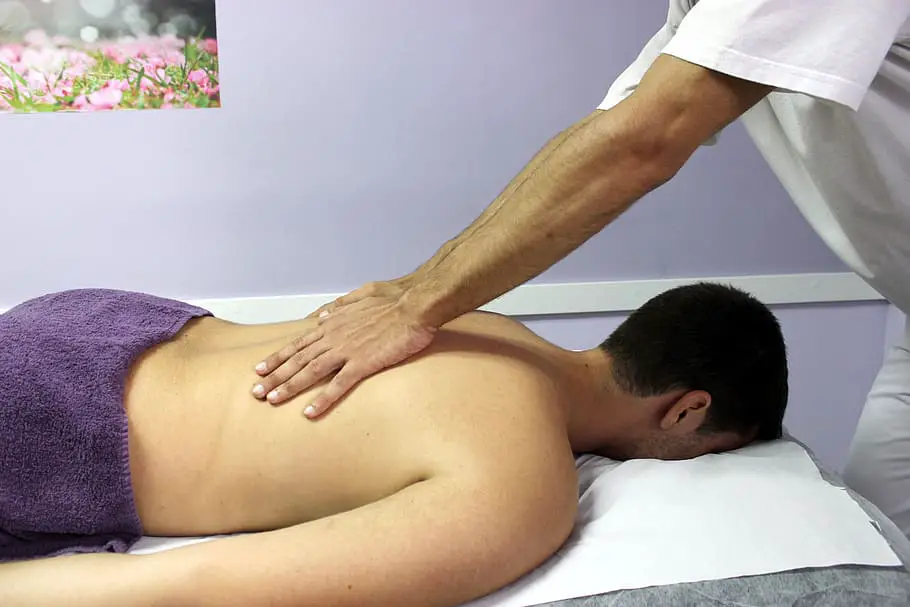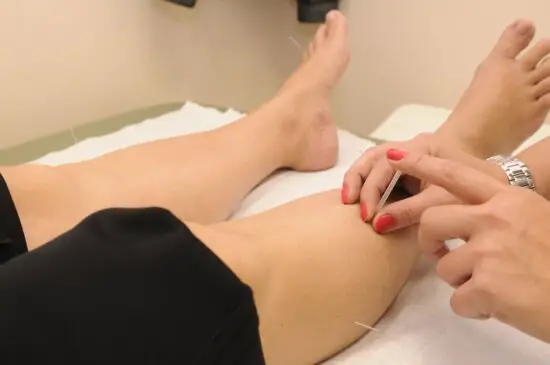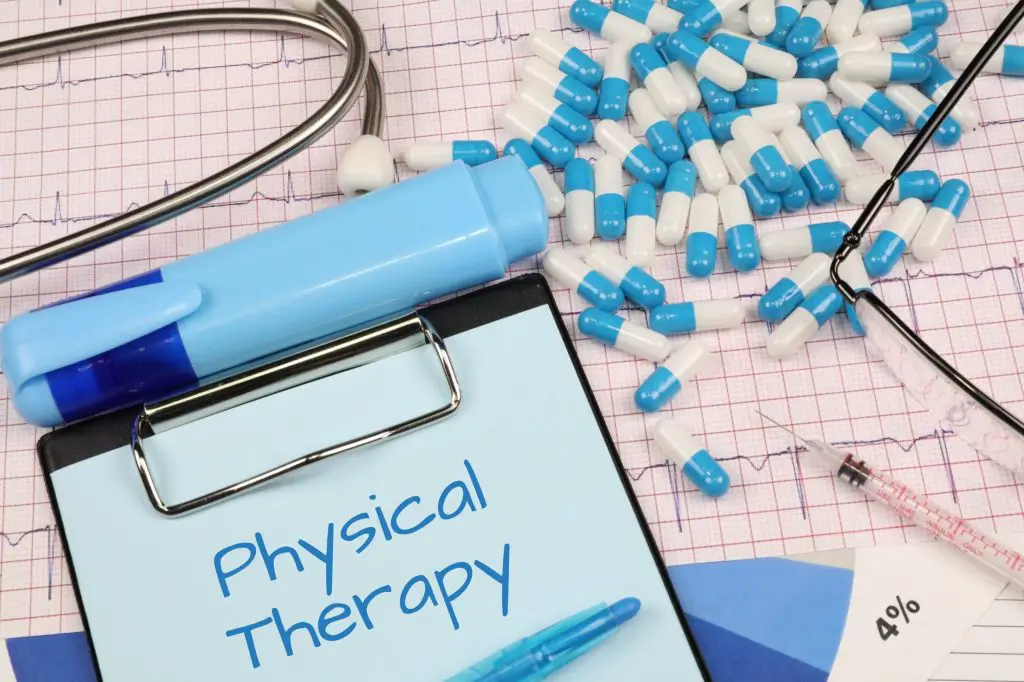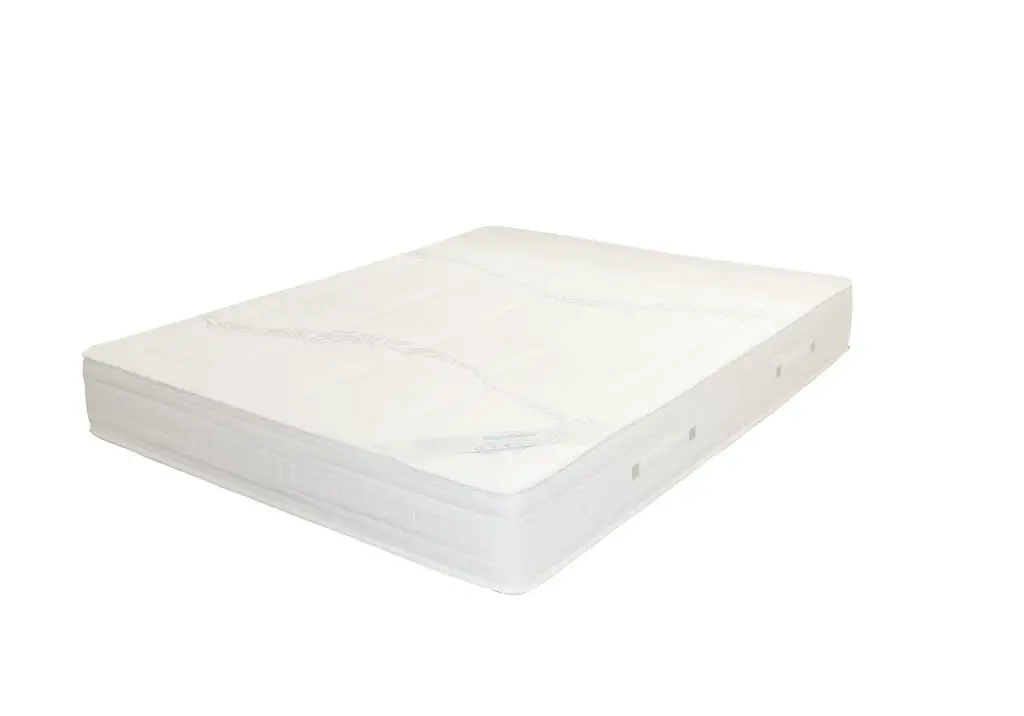Welcome to our blog where we discuss the best pain relief solutions for those suffering from back pain. Whether you’re dealing with a mild ache or a chronic problem, we’ll help you discover the optimum way to get relief. So, if you’re looking for an answer to that age-old question: what is the best pain relief for back pain? Read on and find out!
Contents
Boost Your Mood
When it comes to treating lower back pain, it can help to look beyond traditional physical treatments and consider ways of boosting your mental well-being too. Pain-related issues tend to have a significant overlap with mood, anxiety, and other mental health concerns. It is common for the cycle of negative thought processes to feed into the experience of actual pain. And if you start focusing on ways to break out of this cycle and boost your overall mood, you may find that you are similarly reducing the intensity of associated physical aches too.
Recent research has looked at how particular components in pain relief can also enhance severity. Researchers now believe that certain brain circuits play a role in both physical and psychological aspects of suffering from lower back pain. Focusing on mental well-being strategies such as regular exercise, getting enough sleep, and addressing stress while inviting more positive feelings like friendship and self-compassion into your life may help reduce symptoms associated with lower back pain treatments even more effective than just relying on traditional medicine alone.
Finding healthy ways to take care of yourself through hobbies that make you feel good, taking moments throughout the day where you can offer yourself kindness, or practicing self-reward for small successes can also be extremely beneficial for easing discomfort caused by chronic lower back pain problems.
Making sure that your diet focuses on foods that make your body resilient rather than aspects not directly related to physical health like counting calories or points allows much-needed energy to be directed towards recovery instead!
Book A Massage
My advice would be to book a massage if you’re dealing with back pain. Massage is an effective way of tackling the specific parts of your back that are causing discomfort, so it can make a much larger difference than general relaxation rubdowns. The best thing you can do is book a massage on a weekly basis, so long as your budget allows for it.

The structural massage focuses on the underlying muscle strain in your back and helps to provide relief from acute pain, allowing for complete medical care for lower back pain and shoulder discomfort. Plus, getting regular massages gives you a legit excuse to pamper yourself from time to time!
Studies have also found that regular massage shows similar improvements in pain relief as anti-inflammatory drugs, making it potentially beneficial to reducing your need for lower-back medication. Thus, when having back pain is concerned my advice would be to visit the closest masseuse or spa facility and take advantage of the many advantages of having a massage on a weekly basis.
Experiment With Acupuncture
Acupuncture is a Chinese medicine staple and has been around for thousands of years. However, the concept of this technique has recently been backed and explored by modern science to determine its effectiveness in treating several illnesses. Back pain is one of those illnesses and although there’s no definitive answer regarding its effectiveness, some studies have suggested it may be an effective way to reduce lower back pain.

Acupuncture works by concentrating on the release of specific chemicals In the body based on where tiny needles are attached, mostly on your lower back region Specifically. These chemicals help decrease pain and inflammation while sending positive signals throughout your way nerves, creating well-being.
The further down you go with acupuncture Stimulates more areas of your body so the pain won’t move from one place to another which is why Chinese medicine specialists recommend at least 2-5 sessions before claiming the experimentation failed completely.
In comparison to other treatments like medication or physical therapy that might take weeks or even months for patients to recover from lower back pains fully, acupuncture can serve as an alternative option, particularly In circumstances whereby patients are unable to complete their medicating regimen due to side effects or any other contributing factors.
Acupuncture has also been known to work better combined with other treatments like hot/cold compression therapy, TENS units (transcutaneous electrical nerve stimulation ), massage therapy, etc., offering even more aid in alleviating chronic back pain conditions significantly after regular simulations.
Consider Physical Therapy
Physical therapy (PT) is often the first-line treatment in the management of back pain and can potentially produce pain relief and return patients to their prior level of function. This process typically involves an examination by a physical therapist that includes an assessment of movement patterns, posture, and range of motion in any areas of dysfunction.
The physical therapist then develops a treatment plan that utilizes therapeutic exercise to improve core strength and balance, as well as other manual or active therapy techniques when indicated.

Common approaches can include strengthening exercises for both flexor and extensor muscles, balancing and agility drills, stretching for muscular tightness (especially in quads, hamstrings, calves, and glutes), electrical stimulation for muscle facilitation or inhibition, compression wraps for helping to reduce inflammation/edema, postural education/training for restoring natural spinal alignment, self-treatment strategies with massage or foam rolling tools such as lacrosse or tennis balls, or specific soft tissue mobilization/release techniques such as myofascial release (MFR) or active release therapy (ART).
In general physical therapy should be considered the first place in the search for back pain relief since it helps address any postural issues that could be contributing to your back discomfort. A physical therapist is able to develop a comprehensive program involving exercises specifically tailored to help your core muscles heal so that you can find relief from your current problems without aggravating any existing conditions.
A plan can also be devised to help avoid future exacerbations through preventive maintenance activities such as stretching routines. If done properly over time this approach should end up producing the best long-term outcomes related to reducing one’s overall degree of impairment so they are able to better tolerate activities that had previously produced pain before they ever went into therapy.
Additionally, PT also seeks to achieve greater patient independence by training them on how to optimize their everyday ergonomics within all relevant environments including home, work & leisure activities.
Prescription Medications
Prescription medications can be a valuable part of the relief for painful back spasms and can bring relief within days or even a few hours. However, they must be used cautiously with a full understanding of potential side effects. Diagnostic imaging tests such as X-rays, MRIs, and CT scans may be needed to determine the source of pain before medications are prescribed.

Cortisone injections can help reduce inflammation and alleviate pain in the short term; however, long-term use is not recommended as it can damage nearby bone and muscle. Nonsteroidal anti-inflammatory drugs (NSAIDs) such as ibuprofen may provide some amount of pain relief from backache. Muscle relaxants may also be prescribed to lessen painful spasms in the back caused by muscle spasms.
Opioids like morphine or oxycodone provide powerful short-term help but should not be taken for more than a few months due to their high potential for misuse or addiction.
Additionally, topical pain relievers such as Voltaren gel (diclofenac sodium topical gel) or applied versions of ibuprofen or lidocaine creams work best, especially on localized low-back pain. Other treatment measures to consider include physical therapy, fluid intake increase, and hot/cold therapies with heat pads or ice packs are widely used among those who suffer from chronic low back pain.
The best approach is to discuss your problems and concerns with your healthcare provider in order to determine the safest option that will truly help alleviate your backache instead of just masking the symptoms without providing meaningful relief.
Do Gentle Stretches
Gentle stretches are one of the key treatments for back pain relief. When done correctly and frequently, they help to reduce muscle imbalances, increase flexibility, and reduce stress on the spine. Stretching is also very therapeutic because it can be adapted to any condition – whether your back pain is caused by a mild injury, orthopedic surgery, or spinal trauma.

To get the best results from stretching when you have a bad back, try doing it more times throughout the day rather than one long session. Start with gentle stretches for 5-10 minutes at a time and gradually build up to longer sessions as your strength and flexibility improve – just don’t push yourself too hard or exceed your pain threshold. Focus on stretching neck and lower back muscles in particular as these are especially vulnerable to strain or trauma.
Stretching can help you make positive changes to how your body feels: an ache-free back promotes movement which can lead to healthier habits such as walking or running instead of sitting in chairs all day long. It’s important not to go too hard when doing gentle stretches – listen to your body and don’t forget that if something doesn’t feel right then you should stop and consult your doctor immediately.
Get a New Mattress
If you suffer from lower back pain, you may be wondering how to find relief. One option to consider is getting a new mattress. It’s a good idea to check how old your mattress is and consider changing it if it’s past its average life span.
Having the wrong kind of mattress can make dealing with back pain even more difficult because it disrupts sleep. Studies have shown that firm mattresses are the most helpful in relieving discomfort because they keep your spine more in line while you sleep.

When buying a new mattress, the material isn’t as important as the firmness rating. You want one rated at medium-firm or firmer so that your body remains comfortable and well-supported through the night. Some people like to buy adjustable beds or mattresses so they can customize the amount of support they get throughout the night.
There’s no fast rule as to which type of bed is best for back pain, but it’s important that you’re comfortable while also getting adequate support from your bed frame and mattress so that your lower back pain isn’t aggravated during sleep.
If you’re still struggling with back pain after purchasing a new mattress or adjustable bed, speak with your doctor or physician about options for finding relief beyond new furniture and medicine. They may recommend stretches and exercises to help strengthen weak muscles related to your condition, or they might send you to see an MD specializing in physical therapy if necessary; their goal is to combine medical advice with lifestyle changes designed to create long-term relief that targets all sources of pain discomfort in order to give you lasting results rather than temporary fixes.
Wear Supportive Shoes
Back pain is an extremely common ailment and there are a variety of approaches to relief for this ailment. One of the most basic methods is to ensure you wear supportive shoes. This is especially true if you have a history of back trouble, but it’s smart no matter your medical history.
The right pair of shoes can provide strong arch support or a cushioned sole that helps shock absorb when walking or running. Additionally, pay special attention to the heels of your shoes; those should not drop off steeply at the back, as this can throw off your stride and lead to possible further injury down the line.
It’s also key to have enough arch support so that all parts of your feet are cradled appropriately and not over-exposed— having sturdy toe boxes also helps keep toes from becoming cramped or uncomfortable when exercising as well as during everyday activities. When shopping for new shoes, always use caution and make sure you practice regular footwear rotation so that one pair does not get worn out faster than another pair. Supporting your feet helps keep them healthy, which keeps you healthy too!
Find Relief Through Ice And Heat
If you have back pain caused by muscle tension, ice and heat treatment may provide some short-term relief of mild to moderate discomfort. Treatment of back pain with cold and heat is a centuries-old practice used to increase circulation, improve blood flow and help reduce tight muscles that cause pain signals.
Doing both types of treatments together at the same time is not recommended; instead, alternate them for the best possible results. You can start with one or the other; if needed, you can do several sessions of each for effectiveness. For ice therapy, use an ice pack or wrapped frozen peas on your sore area; take frequent breaks and keep a towel between the skin and the cold pack. Place a heating pad over the affected area after taking a hot/warm bath or shower; cover it with a thin cloth to guard against burns
Dr. John Ferretti, college professor of Osteopathic Medicine in Fort Worth recommends applying alternating treatment based on his patient’s experience over the years: “Helpful strategies include taking hot baths or showers to help relax muscle spasms followed by an application of direct topical heat using a warming pad or similar device” he added, “On the other hand I suggest using cryotherapy through an application such as with ice packs/cold packs for about 20 minutes every few hours.” The combination helps provide extra oxygen to tighten muscles and reduce inflammation in less than 15 minutes per session which then allows patients to receive both immediate relief from pain as well as long-lasting effects from repetition in several sessions.
Frequently Asked Questions
What is the best thing for severe chronic back pain?
The best thing for severe chronic back pain is to consult with a doctor or physical therapist for an individualized treatment plan. Treatment options may include physical therapy, medication, massage, acupuncture, chiropractic care, and lifestyle changes, such as improved posture, stretching and exercise.
What is the best way to treat back pain?
The best way to treat back pain depends on the cause. Most people find relief with non-invasive treatments such as physical therapy, massage therapy, exercise, stretching, yoga, and chiropractic care. If these treatments do not provide relief, then a doctor may recommend medication, injections, or surgery. For chronic pain, lifestyle changes such as stress management and improved posture may also be helpful.
What painkillers are good for lower back pain?
Non-steroidal anti-inflammatory drugs (NSAIDs) such as ibuprofen, naproxen, or aspirin are generally the most effective painkillers for lower back pain. Acetaminophen (Tylenol) can also be used to relieve pain. Your doctor may also prescribe a muscle relaxant or a stronger painkiller such as codeine or hydrocodone if over-the-counter medications are not providing enough relief.
pain, relief, price, doctor, back, product, muscle, people, health, ibuprofen, body, effects, medications, acetaminophen, aches, muscles, NSAIDs, strength, side, details, inflammation, treatment, symptoms, ingredients, pains, arthritis, medication, time, hours, caplets, tablets, products, medicine, problems, neck, drug, treatments, day, years, prescription, back pain, pain relief, real customers, side effects, pain relief patch, price product details, minor aches, effective relief, active ingredients, neck pain, price amazon, anti-inflammatory drugs, medical help, fewer specifications details, fast relief, inactive ingredients, pain relievers, lowest price product, an anti-inflammatory drug, sales agent websites, price eBay, extra strength, ranking system, physical therapy, muscle pain, arthritis pain, allergic reaction, price Walmart, new symptoms, muscular aches
Conclusion
With so many options available and the risks they pose, it can be a daunting task to establish the right course of back pain relief. Especially, if you are overwhelmed with conflicting advice from the plethora of experts who treat lower back pain. Ultimately, your orthopedic spine surgeon and the family doctor can provide an accurate diagnosis and help create a unique treatment plan based on your individual needs.
In most cases, conservative treatments such as stretching exercises and physical therapy will be first in order to avoid extreme treatment options that carry the risk of potential harm or worsening of your chronic back pain symptoms. Your activity level should also be considered when it comes to pursuing any type of treatment because lighter activity levels tend to call for fewer complications with invasive treatments.
When considering surgery, your MD can assess if it is truly necessary or not by evaluating how long the pain has persisted and other factors such as MRI results or immobilization to see if other forms of lower back pain relief would work better in your case. When surgery is an option the outcome has far better long-term results when used with the appropriate care before less drastic measures have been exhausted fully. In addition, it is also important to remember that many types of back pain resolve themselves over time; however, this depends on its cause and severity.

Alan Walker is an author, researcher, and contributing writer at Spine Institute NY. He is a typical introvert, coffee fanatic, and freelancer.”

